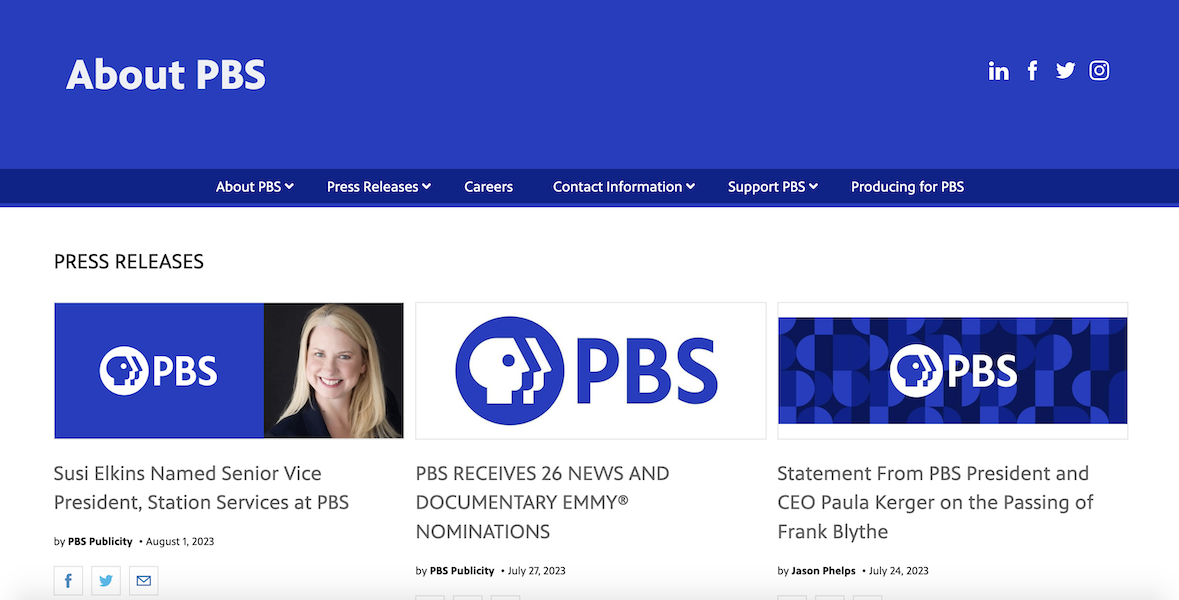Making the Most of Your Organization’s Online Newsroom
By Michelle Franzen Martin, APR
September 2023
Online newsrooms are an increasingly important but often overlooked part of any organization’s media relations toolkit. Not just a place to post press releases, these online repositories of company news and information also help build brand awareness and tell an organization’s story.
Press releases and pitches are still valuable ways to share information with the media, but only when those stories matter to journalists. Even the best pitch will be ignored if the timing isn’t right. Online newsrooms let journalists find the information they want, when they want it.
For freelance journalists who pitch story ideas to editors at multiple news organizations, a company’s online newsroom that offers engaging, relevant content can be a valuable resource. A good online newsroom can also draw journalists and influencers to your organization.
Thinking of building or rebuilding your online newsroom? Consider these factors:
Offer a variety of multimedia content.
A good online newsroom should provide a variety of content and formats. Apple, for example, offers journalists stories on its newsroom that range from product and entertainment news to features about the company’s philanthropic efforts. Reporters can watch video and listen to audio, view and download text and images and find contact information for the company’s PR professionals.
Some online newsrooms, such as the PBS PressRoom, require that reporters are vetted and approved before they can log in and access content. Once cleared, journalists can download photos or watch screener videos of PBS programming.
For your online newsroom, you might offer press releases or breaking news; fact sheets, infographics, bios and photos; and b-roll video packages or facility shots. And because your content needs are constantly evolving, be sure to leave room to grow.
Over the past year, 44% of journalists have included video with their stories, according to Cision’s 2023 “Global State of the Media Report.” And 28% of reporters surveyed said they would like to see multimedia assets in the pitches and press releases they receive. Your online newsroom is the ideal place to showcase your organization’s multimedia assets without requiring reporters to download Dropbox links or to navigate permissions in Google Drive.
When pitching journalists via email, you can provide a link to a press release or other assets on your newsroom without sending attachments that are too large or that might get caught in spam filters. A link is also convenient for reporters who use productivity platforms like Slack, where they can share the link with their colleagues.
Provide two-way communication.
Public relations is all about building mutually beneficial relationships, not pushing out one-way information. Online newsrooms can help achieve this reciprocity and improve your inbound PR.
The best online newsrooms are built by knowing what journalists want and need. These newsrooms offer journalists ways to reach PR pros with questions and feedback, which could be as simple as providing contact information or social media links, or as involved as allowing reporters to download customized story packages that might include a press release, a backgrounder, bios, photos, video and contact information.
You can also push out categories of information — including podcasts — via RSS (Really Simple Syndication) feeds. Of course, an online newsroom should follow website best practices, such as responsive design that renders well on a variety of devices, accessibility and security.
When built properly, online newsrooms can improve the search-engine rankings of your organization’s website and offer insights that benefit your communications program. Internal features, such as a dashboard that measures pre-defined metrics, save the PR team from having to spend too much time poring over Google Analytics.
Think ahead.
Like any PR program, your online newsroom will continue to evolve. Think ahead to the features that could become the second or even third phase of your online newsroom. Maybe it’s a “dark site” of web pages prepared for immediate publishing in the event of a crisis, or a password-protected area where journalists or key stakeholders can access additional content.
Some online newsrooms also include space for virtual press conferences, with the ability to track journalists’ engagement before, during and after the event. While features like these might seem like “nice-to-haves” now, they could become your “must-haves” in the future.



